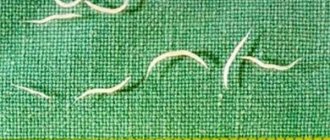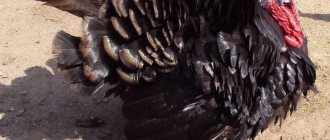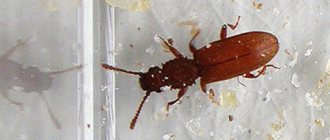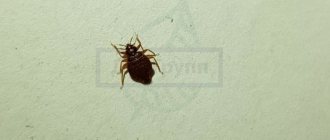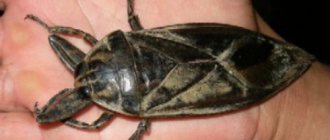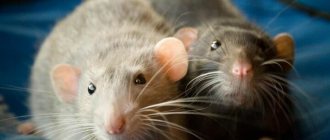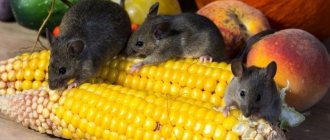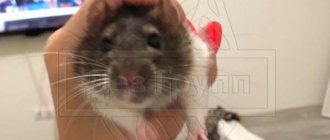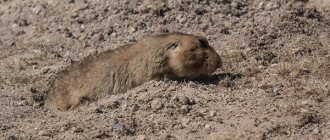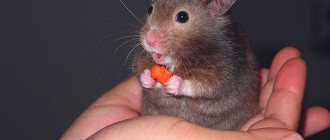Rats are the largest representatives of rodents in the world. On average, their body length is about twenty centimeters. But there are such giant specimens, the size of which can reach the size of a small dog.
In fact, an animal of such enormous size could easily pass for the monster so beloved by horror film makers.
Some species of these mammals are found everywhere, others are on the verge of extinction, and some species of rodents were recently discovered by zoologists.
Large specimens of animals can often be found among pets. They quickly become people's favorites and get used to them themselves. However, their cadaverous smell becomes a real problem and is not so easy to get rid of. But wild giant rats are very dangerous for humans.
We bring to your attention a rating, as well as photographs of the 10 largest rats known to mankind.
Gray rat
Pasyuki are distributed everywhere on all continents of the world, except for northern latitudes and Antarctica. It is the largest representative of the mouse family living in the Russian Federation. Its dimensions are up to 25 cm.
It is the scary gray rat that is a constant character in horror films. Mutant bastards swarming in the subway, sewers full of aggressive rodents – these are directors’ favorite subjects that have tickled the nerves of viewers for many years.
There are also a large number of myths and legends associated with pasyuk. On the Internet you can find stories about specimens weighing 18 kg, allegedly encountered during expeditions to Chernobyl. The gigantic size is explained by the effect of radiation.
Or the “true” stories of Moscow metro drivers who encounter hungry monsters of incredible size in the tunnels. Moreover, they are supposedly powered by insulation from high voltage cables.
Moscow with its underground communications, secret catacombs, old Kremlin towers and the constant rat-monsters swarming there continue to attract the attention of ordinary people with their incredibleness, and this news is increasingly surrounded by new details.
To be fair, we note that the fantasies of the authors of these myths are not supported by anything other than the desire to earn popularity and attract attention to their publications.
Description and general characteristics
The habitat of this numerous species of rodents is closely related to human life, which is explained by the availability of food (dumpsters, garbage chutes, grocery stores, storage facilities and enterprises), as well as the abundance of shelters that provide a safe life for the colony and contribute to the rapid growth of rat populations.
Interesting!
In case of danger or lack of sufficient food, pasyuki can cover distances of several tens of kilometers in search of a comfortable place to stay.
When settling in human possessions, rats do not behave in the best way - they damage floors, furniture, walls, destroy food supplies, spread dangerous infections and terrify with their appearance. In nature, there are up to 70 species of wild rodents; 3 varieties live in Russia:
- gray or pasyuk;
- black;
- Turkestan (red).
Wild rats
Even children know what wild rats look like, because they can be found near residential buildings, in basements, near garbage containers. Rodents are not a rare guest in vegetable gardens, gardens, utility rooms, sheds, and outbuildings where pets are kept. In cities, rats rise in buildings to a height of 8-9 floors through sewers and air ducts; they are frequent guests in subway tunnels. Pests prefer to live in the dark.
A dexterous, intelligent, enterprising, inventive and quick-witted animal is distinguished by amazing devotion to its family and offspring, which are raised by caring mothers. Natural enemies of wild rats are cats, ferrets, pigs, and hedgehogs. They are destroyed by kites, eagles, hawks, owls, owls and other birds.
Appearance:
- rodents have a stocky build and a characteristic oval body shape;
- the rat's muzzle is elongated and pointed, the ears and eyes are quite small compared to the size of the head;
- the tail of most varieties is practically naked and is equal in length to the size of the body or slightly exceeds it, covered with sparse setae and ring scales;
- The rat's fur is dense and quite thick, with clearly defined guard hairs; its color varies from dark gray to reddish-yellow shades.
Potoroo
This is a fairly large species of the Kangaroo rat family. The size of its body is from 25 to 41 cm. Potoroo are nocturnal animals. During the day they live in shallow burrows. They feed on various plants, fungi and insects. Like all animals of the marsupial order, female potoroos have a well-developed brood pouch, in which they carry their young for four months.
Externally, the animals are similar to the musky kangaroo rat. The only difference is the presence of long hairs on the tail of the potoroo. The animal's long, developed hind legs, as well as its movement by jumping, make it look like a kangaroo.
Potoroo can be found in Australia, as well as on the island of Tasmania.
Animals in captivity
Capybaras can be seen very often in zoos. These animals are quite easy to tame, which is why they are popular pets today. But keeping rodents is not so easy. These animals cannot stand loneliness, so they must have constant company. In addition, capybaras must be provided with a body of water in which they can swim. A swimming pool is most suitable for this, so it is recommended to keep animals in private homes.
In captivity, capybaras eat grass, various fruits and vegetables. They also love grain, and some individuals even refuse ice cream. Their body does not produce vitamin C, so it is worth purchasing food with a specially selected composition. Also, owners of these beautiful animals should remember that capybaras need to grind down their constantly growing teeth. It is better to provide them with some hard wood, otherwise they will attack the furniture.
Read with this
Bamboo
One of the largest species of burrowing rodents. Lives in Southeast Asia. Adults reach forty-eight centimeters in length. They live in burrows underground. They feed on bamboo roots, shoots, and various plants.
You can find information online that a huge bamboo giant rodent was caught in China, weighing eleven kilograms! The rat caught by a resident of the city of Fuzhou had huge three-centimeter fangs and a tail length of thirty centimeters. It is curious that this fact was not recorded by either the Guinness Book of Records or other similar authoritative publications.
Capybara is the largest rodent in the world
The scientific name of the animal is Hydrochoerus (water pig). She is the only representative in her family. The Indians call this animal guar “lord of herbs.”
Capybara (capybara in English) is a very interesting animal, a herbivorous mammal. This is a close relative of guinea pigs, similar in appearance to them, but much larger. Unlike guinea pigs, capybaras adore the water element, therefore they are classified as semi-aquatic mammals.
The capybara lives in the tropical zone of South and Central America, in the Amazon, La Plata and Orinocco river basins. Distribution is limited by climatic conditions. An important factor for life is the temperature of the water in their habitats. The animal uses it for thermoregulation in the heat.
An adult reaches a length of 100-135 cm. Height at the withers is up to 60 cm. The weight of an adult female ranges from 28 to 67 kg, and of a male – from 30 to 63 kg. The largest rodent was recorded at 70 kg.
The capybara's fur resembles that of a beaver - it is just as tough. The length of the brown hair is from 3 to 12 cm (they only have this color).
Gerald Durrell (English writer, founder of the Jersey Zoo and the Wildlife Conservation Fund), describing this animal, said that it is a good-natured, phlegmatic vegetarian with a calm and friendly disposition.
The animals are excellent swimmers; their eyes and nostrils are located in such a way that when they are in water, it does not get into them. If a capybara notices a dangerous enemy, it will almost completely hide in the water, only its nostrils through which it breathes will be visible.
The capybara has 20 teeth in its mouth, which grow throughout its life. This feature, characteristic of the family of rodents, causes the capybara to constantly grind them down on pieces of wood or branches.
The forelimbs end in a 4-fingered hand with claws resembling hooves. There are 3 toes on the hind legs. The phalanges are connected by membranes, which allow the animal to move deftly in the water. On the ground, the rodent moves with a shuffling gait, waddling or skipping.
The capybara is a collective animal. It cannot live separately from the group. The family usually numbers about 20 individuals. 6 – 8 females and cubs are grouped around the dominant male.
This rodent easily adapts to life in captivity. The animal's lifespan is 9-10 years, and in artificially created conditions - up to 12. The animal behaves very calmly towards its owners. She loves affection, loves being scratched on the belly and is ready to spend a lot of time near her owner, laying her head on his lap.
The capybara is patient and will never bite. He loves to play with children. She is smart and able to learn simple circus tricks. The animal obeys its owner and enjoys walking on a leash.
They love to lay their head on their owner's lap to be scratched and petted. Capybaras love to have their bellies stroked; such caress often makes them fall asleep.
Feeding the animal is also not difficult. Hay, fruits, grass - all this is suitable for a rodent's diet. You can purchase special food that is sold in specialized stores.
The capybara is picky about living conditions. Capybaras need space, so they need to be bred by providing sufficient territory where grass grows and there is a thornless bush. Under it, the capybara will be able to hide from the sun and also gnaw on twigs.
If there is no bush, then tree branches must be periodically placed in the pen. An essential condition for keeping capybaras is a swimming pool. It should be spacious so that the capybara can swim whenever she wants, dive without limiting her movement. During the cold season, the capybara is kept in a warm, spacious indoor area, where there is a heated pool and enough light.
The price of a capybara in Moscow is about 90-120 thousand rubles; throughout Russia the price can jump up to 150 thousand rubles. As a rule, it is difficult to buy a capybara from hand; you need to place an order in specialized pet stores.
Red kangaroo
This small mammal belongs to the rat kangaroo family. It is so called due to its reddish-brown color. Marsupials are found in Australia and are a rare species. In size, the large rat rodent kangaroo resembles a rabbit; in all other respects, the animal is not much different from a kangaroo. The length of its body is up to 55 cm.
Being the only species of its genus, it is the largest of all kangaroo rats. Their length can be up to half a meter, and their tail can be forty centimeters. Feeds on plant foods.
Lifestyle and nutritional specifics
Rats lead both group and solitary lifestyles. A large colony is capable of controlling an area of up to 2000 square meters. m, marking it and protecting it from the penetration of strangers. Within a group, which can contain 100 or more individuals, there are complex relationships built on a hierarchical principle.
Rat society is dominated by alpha males, endowed with large size and physical strength. Their behavior is characterized by independence and aggressiveness; they mate with females. The remaining males occupy a subordinate position. Relations between females are more peaceful, but among them there are also “privileged” individuals who make the main contribution to the rat population. Photos of wild rats will help you carefully examine and study the pests.
Interesting!
In the wild community there are kamikaze rats or scouts who sacrifice themselves for the safety of the entire population. They are the first to investigate a dangerous situation, try suspicious food, and look for a way out of risky situations.
Rats are able to survive and even reproduce in extreme conditions when other animals die. The reproductive capacity of rodents is quite high. Under natural conditions, offspring are born mainly in the warm season, and in heated shelters, reproduction occurs all year round, the number of broods reaches 8.
Reproduction of rodents
In one litter there is an average of up to 10 cubs, the weight of which is in the range of 4-6 g. The rats are hairless, blind and their ear canals are closed. After a month they become independent. Stillborn and weakened rat pups are eaten by the mother, and the male is capable of destroying the entire litter.
18 hours after birth, the female gains the ability to mate. Pregnancy lasts approximately 24 days. The lifespan of rats depends on the species and ranges from 1.5 to 3 years, although rarely 95% of individuals survive to this age due to the high mortality of offspring, predators, cannibalism, as well as active human activity to destroy dangerous carriers of numerous infections.
Habitat and lifestyle greatly influence what wild rats eat. Animals are omnivores, and due to the fact that they are mammals, their bodies need animal proteins:
- the need for protein is satisfied by amphibians, mollusks and fish;
- rats catch small rodents, steal bird eggs and chicks from nests;
- Among plant foods, they prefer cereals, nuts, fruits and green plant matter.
Gambian marsupial
It is also called the hamster rat. The name of this subspecies comes from the animal’s ability to carry food in its cheek pouches, like a hamster. Lives on the African continent. Giant rodents, the length of individual individuals of which can reach up to ninety centimeters, have a body weight of no more than one and a half kilograms.
Gambian rats tend to be pets. They are also easy to train, which makes it possible for them to be used by special services when searching for explosives.
Danger to humans
The confrontation between humans and rats has lasted for thousands of years. In our time, such a struggle has received an official name - rodent control. Despite its notoriety in Europe and many other countries, including the Americas, in some countries of the East this rodent received the status of a divine animal that symbolizes wealth, wisdom, prosperity, etc. The negative image of this rodent is associated with several plague epidemics in Europe, which were carried by rats.
Some species of rats cause serious damage to agricultural crops because they simply destroy crops. Therefore, in such conditions, people resort to various methods of protecting crops from rodent invasion. In some cases they are simply scared away, and in others they are physically destroyed. Currently, rats pose a serious threat to the health of all humanity, since these rodents carry pathogens of dangerous diseases. The danger of their vital activity also lies in the fact that these rodents are able to completely unnoticedly penetrate into a human home through sewage and ventilation systems.
Despite the constant and serious fight against rats and other rodents, it has not yet been possible to completely destroy them, but it is still possible to control the populations of these pests.
Experts have established certain norms for deratization, which is associated with the optimal percentage of freeing the territory from rodents.
Therefore it is considered:
- 80% – the result is satisfactory.
- 90% is a good result.
- 95% is an excellent result.
In this regard, it is generally accepted that the task of special deratization services is to maintain in a certain area an acceptable percentage of rodents that would not be able to cause much damage to human life.
Woolly rat Bosavi
The biggest rat in the world. It was discovered in 2009 by researchers from England on the island of Papua New Guinea in the crater of the inactive Bosavi volcano. This is where its second name came from – the Papuan rat. The length of the mammal exceeds ninety centimeters, and its weight is approximately one and a half kilograms.
Outwardly, it is no different from its counterparts, except for its dimensions. It is noteworthy that the animals turned out to be absolutely peaceful and were not afraid of people.
You can learn about effective poisons from this article.
